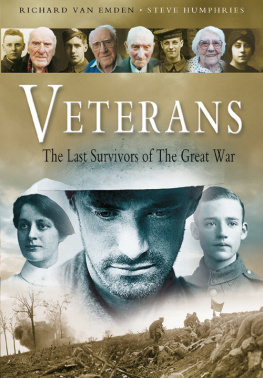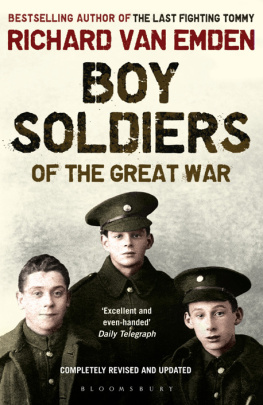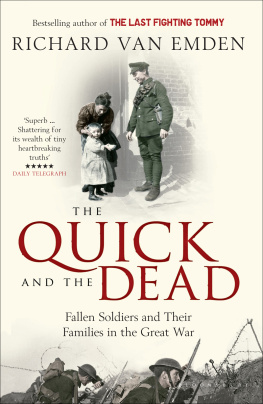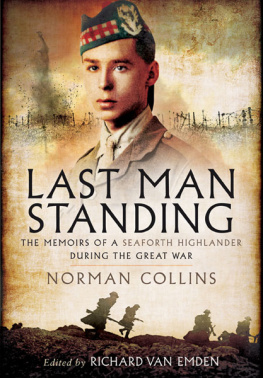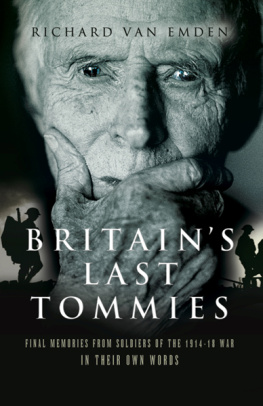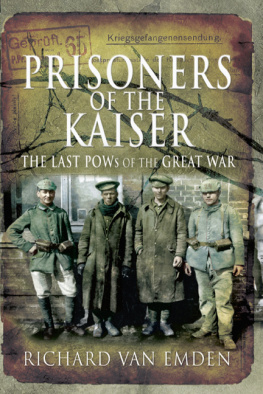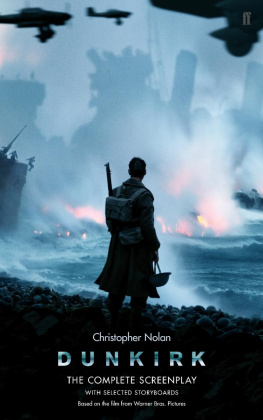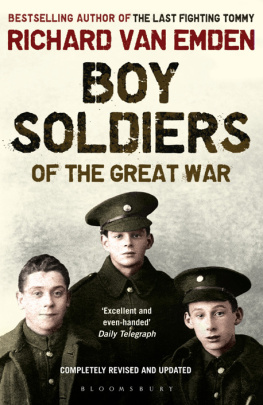I would like to thank the enthusiastic and supportive staff at Bloomsbury, particularly Bill Swainson, the senior commissioning editor, for their encouragement and continued belief in my books. I am also very grateful to Liz Woabank for her keen interest and kind assistance, Oliver Holden-Rea, Tess Viljoen, Maria Hammershoy, Holly Macdonald, Paul Nash and Anya Rosenberg for their collective skill in helping to bring Meeting the Enemy to publication. I would also like to express my gratitude to Richard Collins for his careful and insightful editorial comments on this, the fifth of my books he has edited.
Especial mention should be made of my excellent agent, Jane Turnbull, whose astute thoughts and insights have been of invaluable help this year; I greatly value her friendship. Once again, I am very grateful to my great friend Taff Gillingham for his technical reading of the text and the discovery, as always, of small but important errors on my part; his kindness is much appreciated. My appreciation also goes to Peter Johnston for excellent additional research work.
My warmest thanks must go to my family: to my mother, Joan van Emden, whose support is unquantifiable and whose deft literary comments are, once again, of immeasurable help. Thank you, Mum. I am indebted also to my wife, Anna, who is a tower of support and who never makes adverse comments other than that I should try to tidy my study now and again - will do!
I would like to thank the following people for permission to reproduce photographs, extracts from diaries, letters or memoirs: Calista Lucy at Dulwich College for background information on Wilford Wells; fellow author Jack Sheldon whose expert knowledge of the German language and German military units helped decipher Wilford Wellss military records; Christine Leighton, College Archivist at Cheltenham College for her generous permission to reproduce the image of Henry Hadley. I would also like to thank Margaret Tyler and Kevin C. Dowson for permission to reproduce the picture of Major Renwick and fellow officers of the 3rd Infantry Labour Company; Liz Howell for the image of men of the 30th Middlesex Regiment and Private Charles Kuhr, taken at Reading in 1917; Kevin Northover for his picture of fraternisation at Beaumont Hamel and Kevin Varty for the image of Captain Richard Hawkins. Thanks also to Fergus Johnston and Ellen Campbell, both distant relatives of Henry Hadley, and Christopher Jage-Bowler, priest at St Georges Church, Berlin. My gratitude for help and advice goes to my good friends Mary Freeman, Jeremy and Mark Banning for their thoughts and useful tip-offs! Thanks, too, to Dave Empson, William Spencer, Stephen Chambers, Duncan Mirylees and Gaby Chaudry.
As always, I am very grateful to the families of those I have interviewed who have also been most kind in forwarding precious family photographs and documents.
Also available by Richard van Emden
Richard van Emden has interviewed more than 270 veterans of the Great War and has written fourteen books on the subject including The Trench and The Last Fighting Tommy , both of which were Top Ten bestsellers. He has also worked on more than a dozen television programmes on the First World War, including Prisoners of the Kaiser , Veterans , Britains Last Tommies , the award-winning Roses of No Mans Land , Britains Boy Soldiers , A Poem for Harry and, most recently, War Horse: The Real Story . He lives in West London.
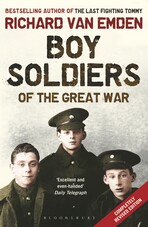
Boy Soldiers of the Great War
The youngest soldier who fought in the First World War is believed to have been just twelve years old. Caught up in the wave of patriotism, many thousands of other boys are known to have lied about their age, inflated their chests and stood on tiptoes to bluff their way into a war of unforeseen horror. How and why so many under-aged boys were able to get to the Western Front remained unexplained and, until Richard van Emdens classic account, largely unexplored. Boy Soldiers of the Great War tells the incredible stories of the young boys who went to fight for their country.
Should this have been allowed to happen? Richard van Emden's fascinating and distressing account ... shows how difficult it is to provide a simple answer. Sunday Times
Engaging, well-written and balanced. The Times
Excellent and even-handed. Daily Telegraph
Tickled to Death to Go
Veterans: The Last Survivors of the Great War
Prisoners of the Kaiser
The Trench
Last Man Standing
All Quiet on the Home Front
Boy Soldiers of the Great War
Britains Last Tommies
The Last Fighting Tommy (with Harry Patch)
Famous 1914 1918
The Soldiers War
Sapper Martin
Tommys Ark
The Quick and the Dead
The dry summer heat had given way to a cool, pleasing breeze as the Reverend Henry Williams strolled to his flat in a side street off Berlins famous Kurfrstendamm. It was Sunday evening, 26 July 1914, and the thirty-seven-year-old priest was on his way home from St Georges Church where he served as chaplain. Built in the royal gardens in 1885, this very English church was physical proof of the close ties between Britain and Germany. It had been given as a silver wedding present by the then Prince and Princess of Wales, later King Edward VII and his wife, Queen Alexandra, to Edwards eldest sister, the Crown Princess of Germany and later Empress.
The church register revealed an impressive list of high-status guests: Queen Victoria had visited in 1888, as had her eldest child, also named Victoria, the German Crown Princess; their signatures so similar, Williams reflected, that they might have been written by the same hand. Edward and Alexandra had signed the book, as had their son, Albert, and in 1913, during the last royal visit to Germany, King George and Queen Mary had stopped by. But perhaps most interesting of all was the name of the Kaiser himself, signed not as Wilhelm but William in recognition of his maternal heritage. The Kaiser had visited St Georges in 1904 as an honoured guest at the wedding of the British ambassadors daughter. Yet, while the Kaisers English spelling was diplomatic, thoughtful even, to have assumed that his action was modest would have been wide of the mark, for his signature was made with a truly magnificent flourish, filling the entire page.
Ten years later, Anglo-German fraternity was about to be torn apart. The political skies over Europe had darkened rapidly after the assassination of the heir to the Austro-Hungarian throne. During a visit by the Archduke Franz Ferdinand and his wife, Sophia, to the Serbian capital Sarajevo in June 1914, a young Serbian nationalist had shot them both dead. One diplomatic crisis followed another as what at first seemed to be a local crisis in the ever-turbulent Balkans had instead spread the contagion of war across a continent. The European system of political alliances and military guarantees was awoken. In the event of war, Berlin would back Vienna in its dispute with Serbia. In response, Serbia would look to Moscow for support, and Moscow, in turn, would look to Paris; Paris looked towards London. On the afternoon of 23 July, the Austro-Hungarian Empire handed a ten-point ultimatum to Serbia. In effect, the Serbs were being ordered to cede sovereignty. They had forty-eight hours to reply or there would be war, with the implicit threat of invasion.
The Reverend Williams read the newspapers and fretted over the prospect of conflict. From week to week I had watched the threatening storm approaching without believing that it could ever burst. The Kaiser had left for his summer cruise in Norwegian waters and, while he was there, thought Williams, What need to worry? But the Kaiser was breaking off his cruise and returning to Berlin. That Sunday, as Williams made his way home, he could literally hear the drums of war.
Next page

